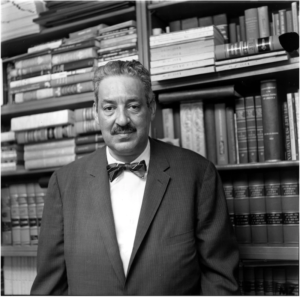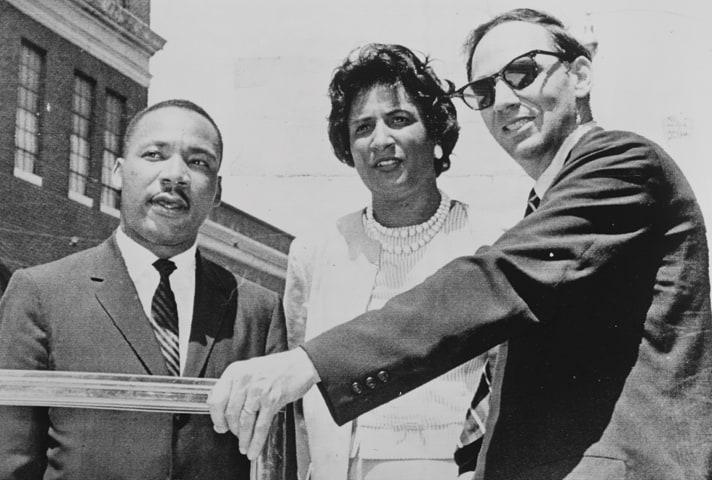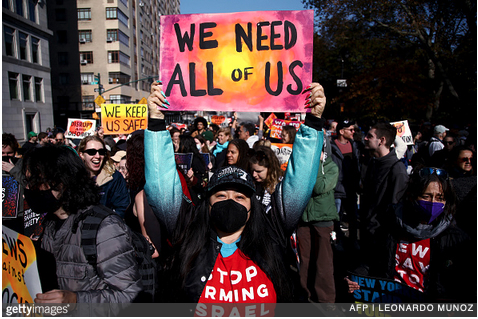Reviewed by Elizabeth V. Hallett
“A must-read for anyone who dares to believe that equal justice under the law is possible
and is in search of a model for how to make it a reality.” —Anita Hill
The newly released book, Civil Rights Queen: Constance Baker Motley and the Struggle for Equality provides a thoroughly researched, admiring, yet objective, view into the formation, life and times of an extraordinary woman. As a civil rights lawyer, Motley challenged glass ceilings in courtrooms across the South as well as in the offices of the Legal Defense Fund, where she was the only female lawyer forging civil rights case law. Much of Judge Motley’s work also predated another famous judge, Ruth Bader Ginsberg. That was only the beginning of an illustrious career. She was to become the first Black woman elected to the New York Senate, the first female Manhattan borough president, and, most important, the first Black woman appointed to the federal bench.
Brown-Nagin’s biography arrives on the crest of the ascendancy of Ketanji Brown Jackson, who has been nominated by President Biden to become the first Afro-American woman to sit on the Supreme Court. Judge Jackson is an intellectual daughter of Judge Motley, who was one of the most influential judges in U.S. history, navigating twin struggles for civil rights and gender equality at a time when both were more fraught than they are now. Judge Motley was an older contemporary of Judge Ruth Baker Ginsberg.
In the introduction to “Civil Rights Queen,” Brown-Nagin offers historical context and an inspiring cameo of what becomes a fascinating, unnerving and admirable record of deep historical importance.
 Excerpts from Introduction by Civil Rights Queen, by Tomiko Brown-Nagin:
Excerpts from Introduction by Civil Rights Queen, by Tomiko Brown-Nagin:
“During the condemnation of the racism and violence of the Nazi regime, the U.S. government virtually ignored the wave of anti-black terrorism – the all too frequent beatings, shootings, and lynchings of African Americans – that occurred in the postwar south. Veterans, who led a growing resistance to anti-black oppression, were routinely victimized and in dire need for representation. Constance Baker Motley, then in her twenties, became one of the most prominent and tireless advocates for African Americans during the turbulent era.
By 1950, African Americans from not just the South but across the whole United States counted on Motley to stand up for racial justice and protect the rights of Black citizens. Handling dozens of cases at a time in a dizzying array of subject areas, she deployed her sharp legal skills to combat discrimination in the criminal legal system, in education, in housing, in the workplace, in politics, and in countless other areas. Her advocacy took her to small towns and cities throughout the South, to the urban North, and to the Midwest.
Wherever she appeared, the striking, audacious Motley captivated and stunned onlookers. At that time, few had seen a woman lawyer or even a Black lawyer, much less the extraordinary combination of the two. The novelty of Motley and her courtroom talents made her an icon of equality. “She’s a prime mover in the cause of civil rights across the nation,” wrote one reporter, and “may justifiably be called “The Civil Rights Queen.” Part heroine, part warrior, the moniker implied, she wielded the law like a sword of justice…
In “Civil Rights Queen,” Motley’s life and work take a turn in the spotlight. The book shows that hers is a story of a remarkable, and improbable, American life. As LDF’s only woman lawyer for many years, the first Black woman elected to the New York Senate, the first female Manhattan borough president , and, most important, the first Black woman appointed to the federal bench, Motley has a tremendous impact on public life. She left an indelible mark on her time and bequeathed us a singular legacy. In various guises, across different eras of change, she helped remake the law and reconstruct America.”

Constance Baker Motley was hired for the Legal Defense Fund, by the lead lawyer, Thurgood Marshall, for whom she was immediately dedicated team member challenging civil rights cases in the 1960’s. There Motley’s brilliance found a home and took off. Later, Justice Thurgood Marshall, who became the Supreme Court’s first Afro-American justice, would recall, as included in the book:
“Connie just walked in, walked in and took over,” Marshall recalled years later. She handled hundreds of civil rights cases over a twenty-year period that began in 1945 and continued through 1965—efforts that remade American law and society. In 1954, she played an invaluable role in Brown v. Board of Education, a singular case in twentieth-century American constitutional law. The unanimous U.S. Supreme Court decision outlawed state-mandated racial segregation in the nation’s elementary and secondary schools. Motley desegregated flagship public universities in Georgia and Mississippi. She represented the Birmingham Children’s Marchers, who were mercilessly attacked and thrown out of school for participating in anti-segregation protests. She helped Dr. Martin Luther King Jr. escape the horrors of a jail cell in rural Georgia. Throughout the course of her work for the civil rights movement, Motley compiled an enviable record as a trial and appellate lawyer. One of just a few women lawyers and the first Black woman lawyer known to appear at the Supreme Court, she won nine of the ten cases that she argued before the nation’s highest court. She summed up this work for the movement by saying, “We have wrought a miracle.” **
After Thurgood Marshall’s comments, Brown-Nagin’s introduction continues,
“… A change maker and a “first,” Motley was a path breaker who evolved in each new role , growing with the times and through her relationships with a circle of activist colleagues and friends. Her activism spanned generations that included some of the most compelling men and women of the twentieth century – Medgar Evers, James Meredith, Bella Abzug, Pauli Murray, Adam Clayton Powell Jr., Malcom X, Shirley Chislolm, Martin Luther King Jr., John F. Kennedy, Robert F. Kennedy, Lyndon B. Johnson, and, of course, Thurgood Marshall. As a lawyer, as a politician, and as a judge she shaped struggles for equality and justice, sometimes in collaboration with, and at other times in competition with, some of these figures. In each role and era, Motley stood as a model of social change in America, and of its limitations.
The questions raised in Civil Rights Queen – about the purposes and limits of power when wielded by talented agents of change on behalf of marginalized people remain relevant today. Ours is a turbulent age that has given rise to a new era of activism and dissent. The fanciful notion of a “post-racial_ society ushered in by the 2008 election of Barak Obama to the U.S. presidency, the first African American to hold that office, gave way in 2016 to the presidency of openly-bigoted Donald Trump and mobilized a resistance to persistent inequities.
Motley’s is a story about both talent and the structures of inequality, but it is not only about these critically important factors. It is a window onto how a woman’s mindset in the face of inequality and her choices about how to publicly perform her identity positioned her in an unequal world….Motley shook up the world. Her life fills out the picture of change in twentieth century America, and it throws light on unfinished struggles.”
** See Civil Rights Queen: Constance Baker Motley and the Struggle for Equality, 2022; Introduction, p.5.
Pictured, above: Constance Baker Motley first met Martin Luther King, Jr., in July 1962, after successfully arguing that protesters had the right to demonstrate in Albany, Georgia. Lawyer William Kuntsler is at right. Credit: Library of Congress, Prints and Photographs Division, NYWT&S Collection, LC-USZ62-138785.


